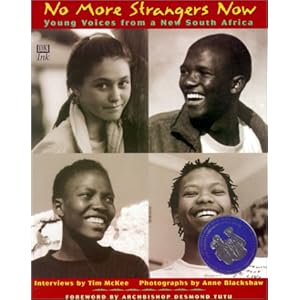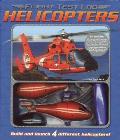He only has two more lessons in his Videotext Algebra to finish up and is continuing with his outside Algebra II class.
He continued reading To Kill a Mockingbird this week for his outside class, as well as reading Huck Finn at home.

We're continuing with review of his vocabulary words from last year using an online source that provides flash card practice with spelling, matching, word/definition scramble, and a test for each chapter or set of words.
He's continuing writing for me at home using a resource that covers the topics of the Cold War Era, as well as writing for his outside lit class.
Spanish and Latin continue as usual.
Geography Club met again this week to get back on track with their regularly planned meeting dates. They finished up South American studies and continued with two more Western states.
In history this week, we read about the decolonialization of Africa and the establishment of Apartheid in South Africa using our Kingfisher encyclopedia; Usborne Atlas of the 20th Century; A Child's Eye View of History (re: apartheid); and Haywood's Atlas of the 20th Century.
My son read chapters 32 and 34 of Story of the World (just the chapter halves that cover Africa).
I read aloud Witness to History: Apartheid in South Africa, David Downing, and we discussed at length.

I began reading No More Strangers Now, Young Voices From a New South Africa, Tim McKee. Great stories!

My son began reading Warriors, Warthogs, and Wisdom, Growing up in Africa, Lyall Watson (South Africa).

In science, co-op class has concluded and there was no chemistry. In our little home class, we talked about hovercraft and tried one out. They are classified as aircraft and piloted like an aircraft, rather than like a boat, because they don't use rudders in the water, but skim along on air on top of it. Unless they are on a track system such as a monorail, they are floating on air and can skim off in any direction if not kept under appropriate control.
We looked at a cutaway illustration of one used for both passengers and vehicles and talked about its parts. The most important are the propellers used for thrust, the lift fans that create the plenum chamber (a body of air floating under the craft between it and the surface), and the rubber skirt that helps keep the plenum contained. They use rudders for turning purposes, as well as turning the propellers.
I had a model of one, but there really wasn't anything to build. You could design several types by changing the types of propellers and containment areas on top, but the vehicle itself was already self-contained. All I did was add batteries and the cover over the lift fan. We scooted it without air to see the force of friction on it, then with the air on to see it glide very much like an air hockey puck. It worked great on my glass table top (low friction) and even on my very dirty floors.
We looked at a mock up of the pilot's control panel, which looks very much like that of an airplane cockpit.
We looked at the different types of hovercraft in use: search and rescue; military transport (and talked about how fast they can make rounds, how much payload they can carry, etc.); racers (and the fact that they create no wake); ferries (safer for animals in the water because there's no propeller or rudder in the water); polar exploration; barges, including big oil rigs.
We looked at some examples of some different styles from the past, including round ones that look like flying saucers, and some proto-types for the future.
Then they put together a helicopter and flew it. They also created a second model and tested it out.
We talked about how helicopter pilots and engineers refer to the spinning rotor as if it is a single, disk-shaped wing that they call the rotor disk.
We looked briefly at a mock-up of the cockpit of a helicopter and talked about how the rotor disk can be tilted to move the vehicle in a different direction.
We looked at different styles of helicopters: flying tankers used to put out forest fires; military choppers; land and sea rescue (this is the first copter they made); small choppers used by radio and TV crews to follow weather and traffic in cities (this is the second copter they made); and ultralights.
We talked about tiltrotor craft, such as the Osprey, which is a combo helicopter and plane. It can carry 3 crew and 24 passengers, but can do take off and landings in tight places like a copter.
We looked at proto-types for new styles of helicopters, such as another tiltrotor called the Humming that really looks like a UFO!
Here are the kits we used for these:


One of them put together a snap together model of a Stealth plane while the other put together an Apache helicopter.


Regarding the Stealth: we talked about how the U.S. denied its existence until 1990. How it is designed to evade enemy radar by being virtually invisible to emitted radar waves (flat, geometric surfaces and non-metallic materials throughout). How it was created by the famous "Skunk Works" team at Lockheed. How it minimizes infrared heat signature by diffusing its exhaust outlets with cool air to decrease the heat of the exhaust plume, and how armament is carried internally in a weapons' bay.
Regarding the Apache: we talked about how unattractive it is but that its mission is to seek out and destroy enemy armored vehicles and strong points during the day, night, or under adverse weather conditions, and it is well suited for all that. How it is used to fight, survive, and live with front line troops on a battle field. How it is the most advanced helicopter gunship flying today. It is specifically designed to compliment armored weapon systems on the battlefield. It combines lethal firepower, mobility, and survivability. The model was designed from an actual vehicle and info provided by Hughes Helicopters.
One of them finished early, so we put together a fighter plane 3-D puzzle, which wasn't too cooperative. We talked about how fighter wings are smaller than other craft because their jets reduce the need for longer wing lengths. He took home a book on fighter jets to look through.
He also took home another 3-D puzzle of a helicopter. Those don't come with instructions, just a picture, so I hope that he won't have trouble with it as we did with the fighter!
Here are their planes (the balsa plane is the one he made at the USAF Museum a few weeks ago; the Leyden jar they made is also on the table....):
At home, my son read:
DK's What's Inside? Planes, Hockman and Kingfisher's How Things Work: Planes, Gliders, Helicopters, and Other Flying Machines, Jennings.


Soccer and bowling continued, as did piano. That's about it for the week....
Regena
P.S.: I HATE the new Blogger format! Why is it that something perfectly good always has to be changed for something that is much more cumbersome, doesn't work nearly as well, and doesn't have as many features - all in the name of "progress"???




No comments:
Post a Comment